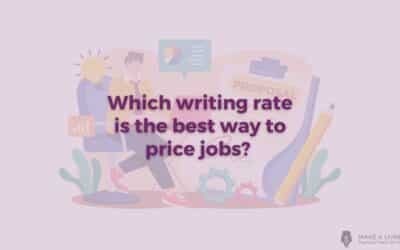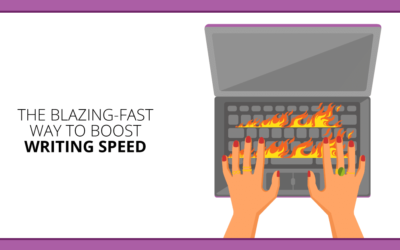
Often, I hear from writers who think if they can just replace the hourly rate they got at their day job with an equivalent hourly rate as a freelancer, they’ll do OK. Check out this comment from one of my recent blog posts:
“I landed another gig on Elance today doing data entry for the next 4 weeks at $11 an hour. No, it’s not $50 an hour, but it pays the bills. And it beats bagging groceries at Trader Joe’s for $9 an hour…”
Unfortunately, that’s not true.
Getting a measly $2 an hour more as a freelancer than you would have earned at a day job doesn’t put you ahead. It puts you way, way behind.
Let’s get out our calculators and do a little math to figure out the size of the problem. To net the same hourly rate as a freelancer, you’ll need to add in the following costs you don’t pay as an employee:
- Utility bills. The heat, water, light and phone bills may all be higher when you’re home all day. As a worker, your boss essentially paid for some of this by hosting you at their place of business .
- Employment tax. Your employer footed the bill on half of this. As a freelancer, you pay both halves yourself. You can look up your tax deduction on a pay stub to see how much more you’ll owe the IRS. You’ll also likely pay state business taxes as a freelancer.
- Equipment. Your boss provided a computer, Internet access, printer, paper, and everything else you needed to work. Now, you’re on the hook for all those costs. When the computer dies, guess who gets to call a tech — or buy a new one?
- Marketing costs. You didn’t need to get out and market your business when you had a full-time gig. Now, you might need to purchase publications, join associations, take trainings, pay a web host, send direct-mail postcards — all those marketing costs are yours to bear.
- Non-billable hours. A full-time job gave you a guaranteed 40 hours of work each and every week. Freelancing isn’t like that. You’ll have hours you need to spend marketing, doing bookkeeping, chasing after slow payers. So to end up with equivalent pay, you’ll have to figure how many billable hours you’ve really got in a month and divide the monthly total you need by that figure, not the 180+ hours of a typical employee.
- Unpaid vacation and sick time. Your boss might have floated you a couple weeks free a year or more, and may have covered a week or more of sick days, too. As your own boss, when you don’t work, you don’t get paid.
Earning $11 an hour as a freelancer isn’t looking so rosy now, hmm? Which is why I advise freelance writers to set a goal of earning $100 an hour.
Sure, the low-priced freelancing allows you to retain control of your day, and hopefully scare up some better-paying freelance gigs. But in the long run, if the pay rate isn’t a whole lot better than you did as an employee, financially you’re going to end up worse off.
Have I left out any costs of freelancing? Leave a comment and add to my list.










